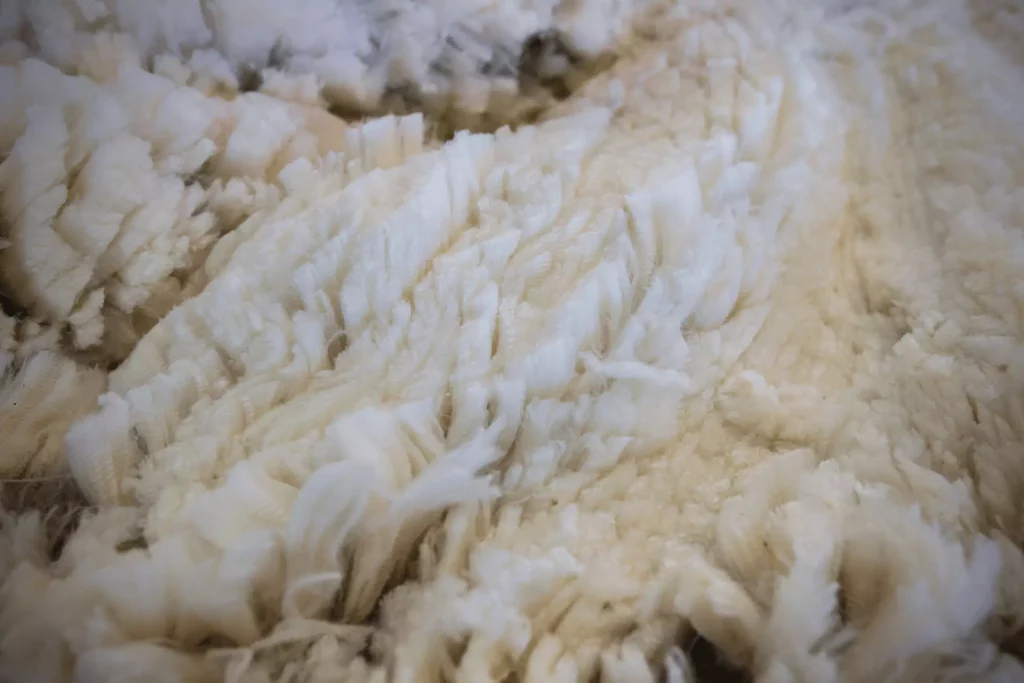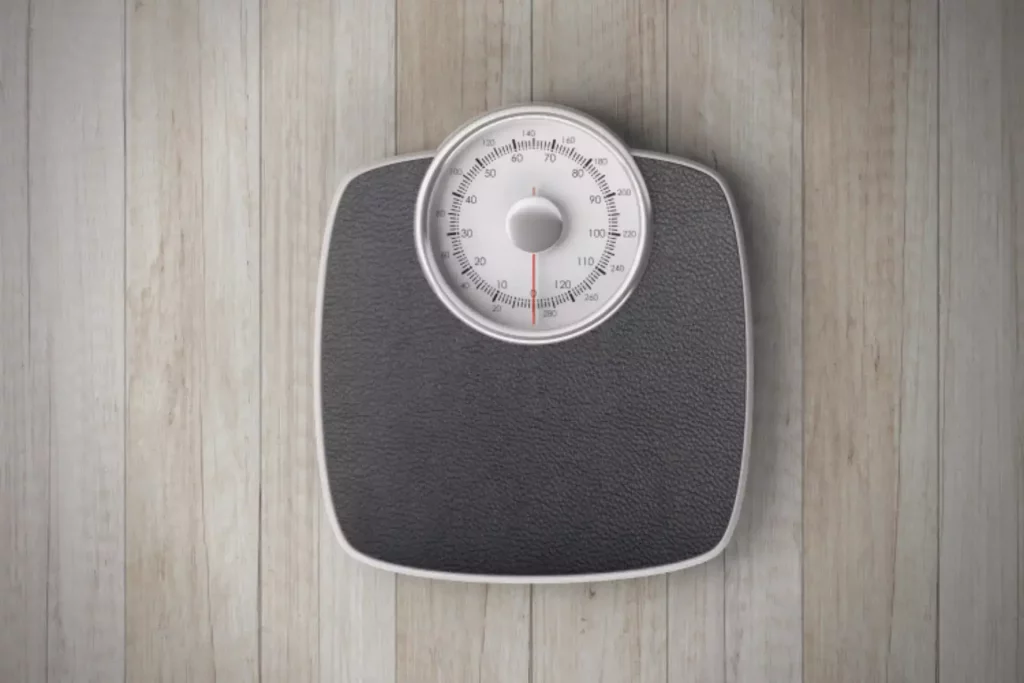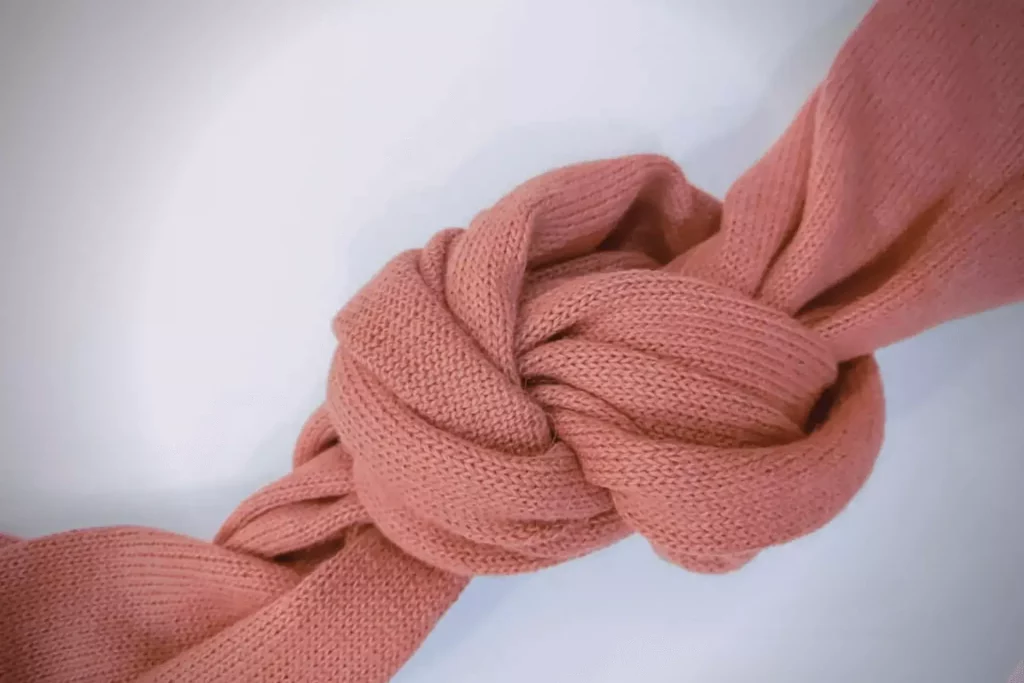Polyester is the most extensively utilized material in the production of sports apparel. Nonetheless, Merino wool is becoming increasingly popular for usage in sportswear because of its numerous advantages. So many outdoor lovers and athletes are perplexed as to which material is the best choice.
It is difficult to determine which material is superior because both offer advantages and downsides. When it comes to hiking base layers, for example, Merino wool is a preferable choice since it is naturally antibacterial (which is especially important on multi-day journeys), but polyester is the best material for racing base layers because such clothing may be quite lightweight.
In the following sections, I will discuss the pros and drawbacks of both materials and provide you with recommendations on which material to use based on the nature of your activity. To help individuals unfamiliar with sportswear, I’ll also clarify which garments are normally made of polyester and often made of Merino wool.
Table of Contents
What is Polyester?

Polyester is an artificial fabric, which indicates that it was created rather than occurring naturally in the environment. Even though it was invented in the 1940s, polyester is still a relatively new form of fabric compared to natural materials such as cotton, silk, and wool, which have been around since antiquity.
Even though it was invented in the 1940s, it didn’t gain widespread popularity until roughly 30 years later, when it was heralded as a “wonder material.”
Because of its adaptability and ability to withstand stains and wrinkles, it was dubbed “the wonder fabric.” Compared to other textiles available on the market, it was extremely easy to maintain up to that time. On the other hand, polyester is adaptable and possesses characteristics since it comprises plastic.
It’s not common to think of cloth when thinking of polyethylene. However, what makes anything plastic is not so much the texture as the material from which it is created.
Polyester is derived from petroleum, which is derived from crude oil production. Plastic is composed of polymers made from petroleum and is utilized to manufacture different types of plastic.
However, there is more than one type of polymer. Polymers may be engineered to have a variety of distinct qualities. That is why polyester has a distinct appearance from the materials typically referred to as plastic.
Because plastic can be altered, there are many various polyester fibers available, each with a unique feel and appearance.
This is the fundamental procedure for producing polyester fibers. First and foremost, the fibers must be manufactured from petroleum and other substances to impart certain qualities. After that, the fibers are spun together to form a thread.
Fabric is made by weaving together different colored threads. However, they may be woven in various ways to provide a variety of fabric looks. As a result, two polyester clothing items that are similar in appearance and feel may seem and feel different.
What is Merino Wool?

Wool is often associated with thick, scratchy sweaters and socks when it comes to clothing, which is understandable given the nature of the material. However, those days are long gone and forgotten in the realm of apparel. It is made from the Merino breed of sheep and has risen in favor of a flexible and pleasant fabric due to its versatility and softness.
Wool fabric is made up of natural fibers since it is derived from sheep’s fleece; on top of the fact that it is recyclable and a reusable fabric, Merino wool has a naturally odor-resistant characteristic. The heat resistance of natural materials is also far higher than that of synthetic fabrics. Thus, you are less likely to destroy or dissolve them while ironing them.
Comparative Aspects of Polyester vs Merino Wool:
First and foremost, merino wool and polyester are extremely flexible materials. Particularly useful are both materials for making base layers, mid-layers, gloves, caps, and socks (among other things). Everyone is aware that polyester produces summer clothing and winter items.
However, you may be surprised to learn that wool may also be used to make summer clothing. Is this anything that you find strange? Contrary to common opinion, some varieties of wool are not only warm, but they also have other benefits.
Since it can be knitted into super fine strands, merino wool is excellent for the base layer. Consequently, summer items made of this natural fabric are lightweight and dry rapidly, making them ideal for the summer months. Furthermore, even when the cloth is extremely thin, it will still feel comfortable on your skin.
Polyester vs Merino Wool – Differences

Even though wool and polyester have a lot in common, there are significant distinctions between the two fabrics. So, are you ready to work with us to evaluate each of the positive and bad elements?
Thermal Efficiency and Weight:

Let’s start with the most important aspect to consider when backpacking: your weight. It was previously reported that fashion firms make clothes that may be worn as a mid-layer and are made of both materials.
Those of you who have been following our recent publications know that the mid-layer is essential for insulation material. As a result, it is a necessary layer in winter apparel for many people.
Therefore, the mid-layer is always broader than the base layer, no matter what textiles manufacturers use textile fibers. For example, a fleece sweater might serve as a decent mid-layer in cold weather for synthetic fabrics.
This product has excellent thermal efficiency, which keeps you warm even though it is lightweight.
On the other hand, Merino wool is not the most suitable material for mid-layers. This is because it does not compare well to synthetic materials regarding thermal efficiency. In summary, merino wool clothing must be fairly thick to keep you comfortable and warm.
As a result, woolen items are quite heavy. What is our recommendation? Rather than merino wool, you should choose polyester when purchasing an item of apparel that will be worn in the middle of a layering system.
The synthetic cloth is also the finest option for a base layer material for weight alone. De facto, even if merino wool is suited for lightweight items, the thinnest fabric weighs 130 grams per square meter, indicating that the material is not very lightweight.
On the other hand, Wool must always have a particular density level to avoid durability issues. In contrast, polyester does not become damaged even though the weave is extremely fine.
Comfort:
Merino wool is extremely soft to the touch and, in most cases, does not scratch the skin or cause irritation. However, the grade of Merino wool, which is determined by the length of the fibers, is equally important: The cloth is softer the smaller the diameter of the yarn.
Wool strands with less than 18.5 microns are used to create high-quality Merino garments. On the other hand, polyester clothing has an artificial feel because polyester is not a natural product (plastic fibers, occasionally recycled bottles, and so forth).
Some individuals shun polyester t-shirts because they believe they are made of “melted plastic,” while others believe they are harmful. Polyester remains the preferred material for sportswear that is not worn directly against the skin (because of its thermal efficiency), like mid-layers, but for base layers in some activities (for example, jogging).
Durability:

The frustration of spending a significant amount of money on an expensive new piece of clothing only to have it damaged after a few years cannot be overstated. It would help if you thus made certain that the garments you choose are composed of long-lasting materials before making your purchase.
Recall how polyester is created by combining plastic and other materials? The adaptability of plastic is its most astounding characteristic, but its durability comes in a close second.
A well-cared-for polyester jacket will last for years without ever stretching, shrinking, or becoming thin or worn out. Because the synthetic fibers are densely woven, they are less likely to tear or rip the cloth when you contact an exposed nail or branch. Polyester, in general, is significantly harder than Merino wool on the surface.
However, this does not imply that Merino wool is fragile. However, it is still a reasonably durable fabric, but not quite on the same level as polyester. It does need a little extra attention to ensure that it lasts as long as possible, but it is possible.
Abrasion is one of the certain disclaimers included in this category. When subjected to high friction rates, Merino wool clothing can become thin and brittle, as runners will notice when the thighs and armpits of their Merino wool clothing become thin and brittle.
Polyester will melt, burn, distort, and otherwise degrade if exposed to high heat, which is unlikely given the high temperatures necessary for manufacturing, in temperatures when Merino wool will not be damaged nearly as much.
Consequently, ironing, high-temperature drying, or leaving it near a heat source such as an open flame or a campfire may quickly destroy a piece of polyester clothing.
In such conditions, merino wool will eventually be damaged, but they can withstand them for longer periods, allowing you more time to rescue them.
Breathability:
When it comes to clothing and materials, this characteristic is sometimes disregarded. If you want a substantial and powerful coat enough to offer you adequate protection but not so thick that it makes you feel stuffy and uncomfortable, you should go for a lightweight option.
It is usually a good idea to keep track of the type of fabric that a piece of clothing is made of since it may significantly impact how breathable it is.
Most polyester fabrics are permeable unless they are made of high-quality polyester that has been securely woven together. Despite this, it does not have the same level of breathability as Merino wool.
A large part of this is how the particular wool and polyester fibers are formed and woven together. In general, Merino wool clothing will have greater breathability than polyester one, as long as the textiles being compared are of equivalent thickness and weave type.
Polyester outperforms Merino wool in a few select situations, such as when dealing with layers of clothing. High-quality polyester mid-layers are more breathable than woolen mid-layers and are thus preferred over woolen mid-layers.
Merino wool is a beautiful fabric with excellent ventilation, but it may not be easy to work with when combined with other materials. If you can find a whole set of layers made entirely of Merino, you’ll be OK; however, if you start mixing and matching, the charm of Merino wool may be interrupted, resulting in a stuffy mess.
The precise comparison between the drying processes for these two items is related to the question of breathability. Polyester garments dry far more quickly than Merino wool clothes of identical type and quality, whether pulled from the washer or caught in a downpour.
Generally speaking, polyester is less absorbent than cotton and requires less water to drain before it gets dry. Because of its inherent moisture-wicking capabilities, Merino wool will feel far less clammy and unpleasant against the skin when wet than polyester. More information about this may be found in the section on temperature control.
Odor Control:

Because Merino Wool is inherently anti-microbial, it will provide great odor-control properties. Although you may smell after wearing the same merino wool shirt for a week, the shirt will remain in good condition. Even if you wear the same clothes for an extended period (and you may smell if you don’t shower), you will not stink.
Anyone who has ever worn a polyester shirt to the gym knows how awful they smell. After mild sweat, it quickly becomes odoriferous. Companies are beginning to treat their garments with anti-microbial treatments. However, the products are ineffective.
The use of anti-microbial therapies After 3-4 wash procedures, the residue should be gone. Expect your anti-microbial clothing to last no more than a few travels before needing to be replaced.
Polyester can be used for short day treks, but it is not recommended for multi-day excursions due to its low breathability. Don’t forget to pack several extra clothes and a bag to keep your filthy or stinky ones in.
Cold Weather:

Most people are familiar with using wool and polyester in mid-layers, the most vital layer for keeping you warm in freezing weather. You’ll also find them utilized for items such as gloves, caps, and scarves, among other things. This isn’t by chance; they are both excellent choices for remaining warm and insulated throughout the winter months.
If you consider that wool, in general, is considered a warm fabric, you could be persuaded that merino wool has an advantage in this category. Polyester, on the other hand, holds up rather well against it. The quality of the particular fabric and the thickness and density greatly impact your capacity to stay warm than the type of cloth you choose for yourself.
As a result, polyester has a slight technological edge over other materials in this application. Because it is light in weight than merino wool, you may use it to produce a similarly thick and warm garment while being lower in weight than its merino wool equivalent. According to the tests, these two textiles are neck-and-neck for pure cold-weather resistance.
Warm Weather:

When it comes to clothing for warm weather, the fabric used is just as, if not more, significant than the style of the garment. You may think that because merino wool and polyester are excellent at retaining body heat, they would be poor candidates for high-temperature clothes.
However, this is not the case. Nonetheless, because they are both quite breathable, they are both excellent picks that will not cause you to overheat.
Merino wool has a major edge in this area because of a few specific qualities. Given that it is the more breathable of the two materials, it naturally lets air circulate freely and aids in keeping you cool and comfortable.
Another small reason in its favor relates to the previous subject of comfort – in warm weather, you are more likely to dress in fewer clothes, which means you will seldom need to dress in anything more than base-layer clothing.
Because merino wool is more comfortable as a base layer, it has a little advantage over polyester in hot weather clothing.
The fact that merino wool wicks moisture considerably better than polyester is a much more visible advantage of using it over polyester. Merino wool fibers are structured to naturally drain away moisture, making this fabric one of the most wicking fabrics available.
This implies that it draws sweat away from the body while it is still vapored rather than after your body temperature has caused it to evaporate completely.
Once the sweat has been transported to the surface of your woolen clothes, it evaporates immediately, keeping you from becoming damp and hot.
On the other hand, polyester fibers are significantly less successful at this, and they typically collect and transmit perspiration after it has collected against the skin.
This might result in the unpleasant damp sensation discussed in comparing breathability. The pain is outweighed by the fact that it causes you to sweat more and feel warmer since the perspiration is taken away before it can do its purpose. In addition, your body expends energy by heating the area of the garment to dissipate the moisture away from the skin.
Drying Time:
Polyester dries much quicker on paper than Merino Wool. Polyester is less absorbent of moisture. Thus it will not become as heavy if it becomes saturated with sweat. What’s strange is that you will feel the dampness even if there is less sweat on your shirt. As a result, it dries more quickly, although it doesn’t feel like it.
Merino Wool is a strange animal! The material is not clammy on your skin, even when wet. This material does not chafe or rub when wet, as with cotton or polyester fabrics. When you wear wool, you will remain warm even if your shirt is not completely dry.
Price:

Because, let’s face it: while quality and usefulness are vital, there are times when you cannot afford to spend a lot of money on a pair of gloves and a sweater. If you are purchasing on a tight budget or don’t mind preceding some benefits in exchange for a lower price tag, here is the hard truth about the figures to consider:
Compared to merino wool apparel, polyester clothing is nearly always cheaper. This is true across all different types of apparel and all different levels of quality. There are a few exceptions when they are around the same price, but merino wool is rarely less expensive than its polyester counterpart.
This is just a result of the fabric’s construction. In contrast to wool, which must be farmed and harvested by a certain breed of sheep before being processed, polyester is a synthetic substance made from plastic that is considerably easier to supply and maintain.
Pros and Cons of Polyester:
Now that you’ve learned more about polyester features, let’s look at its advantages and disadvantages. Polyester fabric is one of the most flexible materials on the market. It offers a wide range of applications and is extremely long-lasting. Because it is commonly accessible, it is also one of the most affordable textiles available.
It does, however, have certain disadvantages. Winter clothing made of polyester, for example, is not the most comfortable or breathable alternative, to name a few of the disadvantages. Furthermore, polyester is a synthetic material, not the most environmentally friendly option.
However, because it often lasts for an extremely long period, you might feel better about wearing it. Last but not least, if you mistakenly wash or dry polyester at high temperatures, it may get damaged or discolored.
Pros and Cons of Merino Wool:
Merino Wool, like any other material, has advantages and disadvantages. It is one of the most insulating you can get on the market as far as textiles go. It is also inherently breathable, moisture-wicking, and odor resistant due to the composition of the fiber.
Furthermore, because wool is a natural fiber, you may feel good about wearing an environmentally friendly fabric.
Wool has several disadvantages that may cause some individuals to avoid using it. For example, wool requires unique handling and storage techniques. It is impossible to chuck it in the washer and be done with it.
Another disadvantage of wool is that it is not suitable for everyone owing to allergies or sensitive skin. Finally, it might be quite pricey depending on the sort of wool you choose.
Frequently Asked Questions:
Is merino wool the most comfortable fabric?
Merino wool is often regarded as the greatest wool on the planet due to its exceptional softness while remaining extremely durable.
Is merino wool a decent choice for the winter?
Yes, merino wool is warm and durable, making it an excellent choice for chilly winter conditions. One of the most significant advantages of merino wool is that it is quite effective at insulating despite its thin and lightweight nature, making it simple to layer.
Bottom Line:
Hopefully, you found this tutorial informative in understanding the distinctions between polyester and wool. Both materials have their advantages and disadvantages, but they are both excellent fabrics in their own right. Your geographic location and the attributes you seek in a cloth will determine the appropriate fabric.

